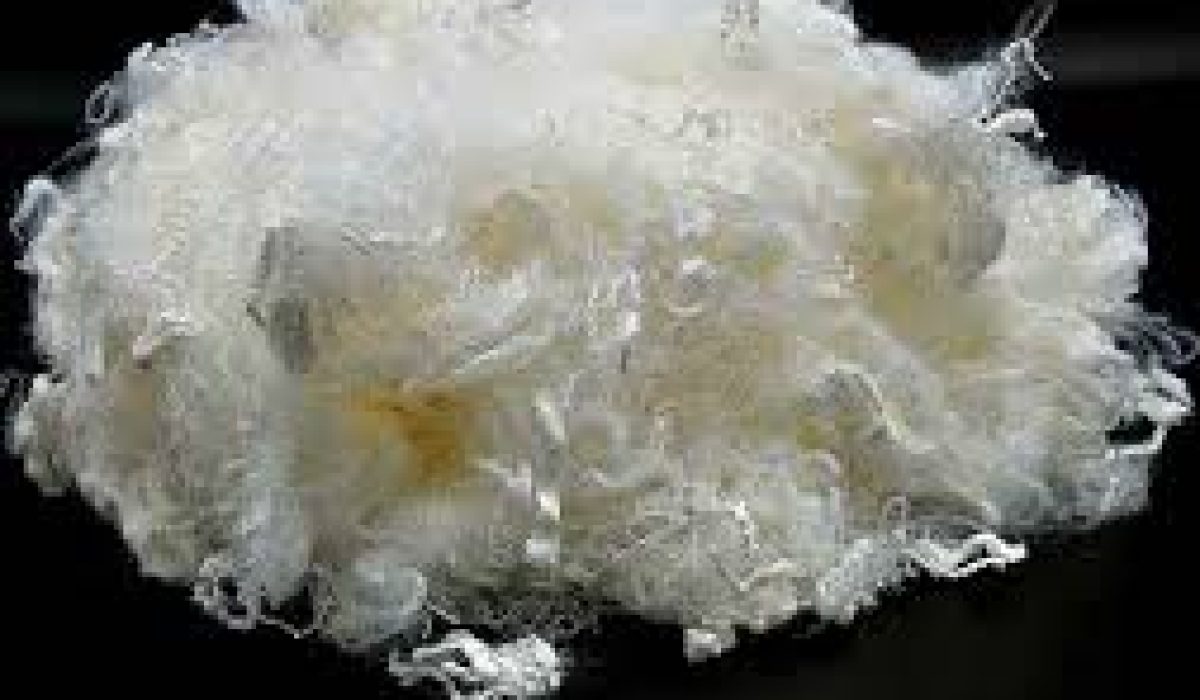
Meta-aramid fiber (also known as aramid 1313 or PMIA), as an important category of high-performance synthetic fibers, has become an indispensable key material in high-end manufacturing industries such as defense and military, safety protection, and electrical insulation due to its excellent heat resistance, flame retardancy, and electrical insulation properties.
After nearly two decades of development, China’s meta-aramid fiber industry has transitioned from complete import dependence to self-sufficiency and is playing an increasingly important role in the global market. This article will comprehensively analyze the current scale, industrial chain structure, production capacity distribution of major manufacturers, competitive landscape, and future technological development and market trends of China’s meta-aramid fiber market, providing comprehensive market insights and forward-looking judgments for relevant industrial investors, corporate decision-makers, and researchers.
Current Status and Scale Analysis of China’s Meta-Aramid Fiber Market
China’s meta-aramid fiber market has shown steady growth in recent years, mainly driven by the continuous expansion of downstream application fields and strong policy support for the high-performance materials industry.
According to market research data, the demand for meta-aramid fiber in China in 2023 was approximately 9,000 tons, with a market size of RMB 1-1.5 billion. With the rapid expansion of domestic production capacity and improvements in technological levels, it is expected that by 2025, the demand for meta-aramid fiber in China will grow to about 14,200 tons.
From the supply side, China’s meta-aramid fiber industry has basically achieved self-sufficiency. In 2022, domestic total production was about 10,000 tons, a year-on-year increase of 10.4%. Notably, China has transitioned from a net importer to a net exporter of meta-aramid fiber.
In 2022, exports reached 2,577 tons, a year-on-year increase of 28.1%, while imports fell by 20.7% to 2,020 tons, resulting in a net export volume of 557 tons. This shift marks the gradual enhancement of the competitiveness of China’s meta-aramid fiber industry in the international market.
- Application Structure: The consumption structure of meta-aramid fiber in China differs significantly from other major global markets. Domestic consumption is mainly concentrated in industrial filtration materials (about 63%) and safety protection (26%), while other high-end applications such as electrical insulation account for only about 11%. This contrasts sharply with markets in Europe and the United States, where electrical insulation and flame-retardant fabrics for safety protection are the main application areas, typically requiring higher product performance.
- Price Trends: In recent years, the price of meta-aramid fiber products has shown a “V”-shaped trend. In 2023, the average price of domestic meta-aramid paper was about RMB 227,200 per ton, a decrease of RMB 5,400 per ton compared to 2022. Price fluctuations are mainly influenced by multiple factors such as raw material costs, the pace of capacity release, and changes in downstream demand.
- Regional Distribution: From a regional market perspective, East China and North China are the main consumption areas for meta-aramid fiber in China, closely related to the local developed industrial base and dense manufacturing layout. In particular, provinces such as Shandong, Jiangsu, and Zhejiang, which are home to a large number of filtration material manufacturers and personal protective equipment producers, have become important consumer markets for meta-aramid fiber.
Policy drivers have become an important force in promoting the development of China’s meta-aramid fiber market. The “Three-Year Special Action Plan for the Standardization and Improvement of Personal Protective Equipment (2021-2023)” released in November 2021 has raised higher requirements for personal protective equipment in key industries such as construction, electric power, and petrochemicals, directly driving the growth of meta-aramid fiber demand in the safety protection field.
At the same time, the national “14th Five-Year Plan” explicitly supports the development of the new materials industry, providing policy guarantees for the research, development, and industrialization of high-performance fiber materials such as meta-aramid fiber.
Global and China Meta-Aramid Fiber Industrial Chain Panorama Analysis
The meta-aramid fiber industrial chain exhibits distinct vertical integration characteristics, forming a complete and complex industrial ecosystem from upstream raw material supply to midstream fiber manufacturing and downstream diversified applications. Globally, the distribution of the meta-aramid fiber industrial chain is closely related to regional resource endowments, technological accumulation, and market demand, while the development of China’s meta-aramid fiber industrial chain presents unique paths and characteristics.
The upstream raw materials segment is the cornerstone of meta-aramid fiber production, with main raw materials including m-phenylenediamine (MPD) and isophthaloyl chloride (IPC). The production technology for these key raw materials has high barriers to entry, and global suppliers are relatively concentrated. In the Chinese market, as the technical capabilities of local chemical enterprises improve, meta-aramid fiber raw materials have gradually achieved domestic substitution, reducing production costs and dependence on imports. However, the production of high-purity specialty chemicals still faces certain technical barriers, and some raw materials required for high-end applications still need to be imported. Price fluctuations of upstream raw materials directly affect the production costs of meta-aramid fiber, thereby influencing the profit distribution across the entire industrial chain.
- Midstream Manufacturing: The midstream manufacturing segment is the core of the meta-aramid fiber industrial chain, with the highest technical barriers and the greatest added value. The manufacturing process of meta-aramid fiber mainly includes key steps such as polymerization, spinning, and post-treatment. The stability of polymerization processes and the advancement of spinning technology directly determine the performance indicators of the final product. Global meta-aramid fiber production capacity is highly concentrated, mainly distributed in a few countries such as the United States, China, Japan, and South Korea. Data from 2022 show that mainland China accounts for 46% of global total production capacity, making it an important production base for meta-aramid fiber worldwide.
- Downstream Applications: Downstream application markets determine the development direction and growth space of the meta-aramid fiber industry. Compared with global markets, China’s meta-aramid fiber downstream application structure exhibits distinct differentiated characteristics. Industrial filtration materials account for the vast majority of domestic consumption (about 63%), mainly used for high-temperature flue gas filtration in industries such as cement, metallurgy, and electric power. The safety protection field accounts for about 26%, primarily used in products such as firefighting suits, protective clothing, and combat training suits. In contrast, high-end applications such as electrical insulation (e.g., aramid paper) and honeycomb structural materials account for a relatively small proportion but have significant growth potential.
China’s meta-aramid fiber industrial chain exhibits obvious regional agglomeration characteristics, forming industrial clusters with Shandong, Jiangsu, and other regions as the core. Yantai Tayho Advanced Materials, as an industry leader, has driven the development of local related supporting industries.
Meanwhile, Jiangsu’s SRO Group and other enterprises have formed competitive industrial ecosystems by leveraging the Yangtze River Delta region’s well-established chemical industry foundation and manufacturing supporting facilities. This regional agglomeration effect helps reduce logistics costs, promote technical exchanges, and improve industrial synergy efficiency.
Table: Analysis of Characteristics of Each Segment in China’s Meta-Aramid Fiber Industrial Chain
| Industrial Chain Segment | Main Characteristics | Representative Enterprises | Technical Barriers |
| Upstream Raw Materials | High concentration, partial dependence on imports for high-end products | Sinochem International, China Petrochemical | High-purity preparation technology is difficult |
| Midstream Manufacturing | Capital- and technology-intensive, highly concentrated production capacity | Tayho Advanced Materials, SRO Group | Complex polymerization and spinning processes |
| Downstream Applications | Mainly low-end applications, gradual expansion into high-end | Mingtai New Materials, Times Advanced Materials | Application development and customization capabilities are key |
Industrial chain collaborative innovation has become an important path for the upgrading of China’s meta-aramid fiber industry. Leading enterprises are enhancing competitiveness through vertical integration strategies. For example, Tayho Advanced Materials not only produces meta-aramid fiber but also extends into downstream areas such as aramid paper, forming a complete industrial chain layout. At the same time, industry-university-research cooperation is becoming increasingly close. The combination of breakthroughs in basic research by universities and research institutions with the engineering capabilities of enterprises is accelerating the improvement of domestic meta-aramid fiber technology levels and the expansion of application fields.
Analysis of Major Meta-Aramid Fiber Producers and Production Capacity in China
China’s meta-aramid fiber industry presents a highly concentrated market structure, with only a few enterprises currently possessing large-scale production capabilities. According to the latest statistics, China’s total meta-aramid fiber production capacity reached approximately 26,000 tons/year in 2023, with actual production mainly concentrated in three leading enterprises, forming a competitive landscape with Tayho Advanced Materials as the leader and SRO Group and others as followers.
Yantai Tayho Advanced Materials Co., Ltd. is the leading enterprise in China’s meta-aramid fiber industry and the second-largest meta-aramid fiber producer globally after DuPont of the United States. Since achieving industrial production of meta-aramid fiber in 2005, the company has continuously expanded production capacity and improved technical levels. As of the end of 2023, Tayho Advanced Materials’ nominal meta-aramid fiber production capacity reached 17,000 tons/year, accounting for 65.4% of the national total production capacity and over 30% of global production capacity. Tayho Advanced Materials not only leads in scale but also has the most complete product line, covering various types such as undyed fibers and dope-dyed fibers, meeting the needs of different application fields. The company plans to achieve a total production capacity of 20,000 tons by 2025, further consolidating its global industry position.
- SRO Group (Jiangsu) Co., Ltd.: As China’s second-largest meta-aramid fiber producer, SRO Group has a production capacity of 4,500 tons/year, accounting for about 17.3% of domestic total production capacity. The company’s products are mainly used in high-temperature filtration and safety protection fields, forming differentiated competitive advantages in certain niche markets. SRO Group is actively expanding into overseas markets and increasing R&D investment in functional meta-aramid fiber products.
- Shenzhen Haotian Longbang Composite Materials Co., Ltd.: As an important participant in the industry, Longbang Technology has a meta-aramid fiber production capacity of 1,500 tons/year, accounting for 5.8% of the national total production capacity. Although the company’s scale is relatively small, it has certain technical accumulation in some special application fields such as high-end protective materials.
- Deanda Advanced Materials: Although Deanda Advanced Materials has built a meta-aramid fiber production facility with a capacity of 3,000 tons/year (accounting for 11.5% of the national total production capacity), as of 2022, the facility had never actually produced any products. This phenomenon reflects the high technical barriers in the meta-aramid fiber industry, where merely possessing hardware production capacity is insufficient to ensure product market competitiveness and economic benefits.
Capacity utilization rate is an important indicator reflecting the operating conditions of the industry. In 2022, the overall operating rate of China’s meta-aramid fiber industry was only about 40%. Among them, the output of domestic leading enterprise Tayho Advanced Materials exceeded 8,000 tons, accounting for over 80% of total domestic supply; SRO Group and Longbang Technology together produced about 2,000 tons. This low capacity utilization phenomenon reflects both the intensity of market competition and structural issues such as insufficient development of high-end applications and excessive competition in low-end markets.
*Table: Comparison of Production Capacity and Market Position of Major Meta-Aramid Fiber Producers in China (2023 Data)*
| Enterprise Name | Production Capacity (tons/year) | Domestic Share | Global Ranking | Main Characteristics |
| Tayho Advanced Materials | 17,000 | 65.4% | Second | Complete product line, leading technology, planned capacity expansion |
| SRO Group | 4,500 | 17.3% | Fourth | Focus on filtration materials, expanding overseas markets |
| Deanda Advanced Materials | 3,000 | 11.5% | – | Facility built but no production |
| Longbang Technology | 1,500 | 5.8% | – | Small scale, focus on special applications |
From a global perspective, Chinese meta-aramid fiber producers already occupy important positions. Among the eight global meta-aramid fiber producers with capacities exceeding 1,000 tons/year, three are Chinese enterprises (four if Deanda is included). DuPont of the United States still ranks first globally with a production capacity of 22,000 tons/year (distributed in the United States and Spain), accounting for 38.5% of global total production capacity; Japan’s Teijin and South Korea’s Toray Hyosung rank third and fifth globally with production capacities of 4,900 tons/year and 3,200 tons/year, respectively. The rapid rise of Chinese enterprises is changing the competitive landscape of the global meta-aramid fiber industry, gradually transitioning from technological followership to parallel and even partial leadership in certain areas.



